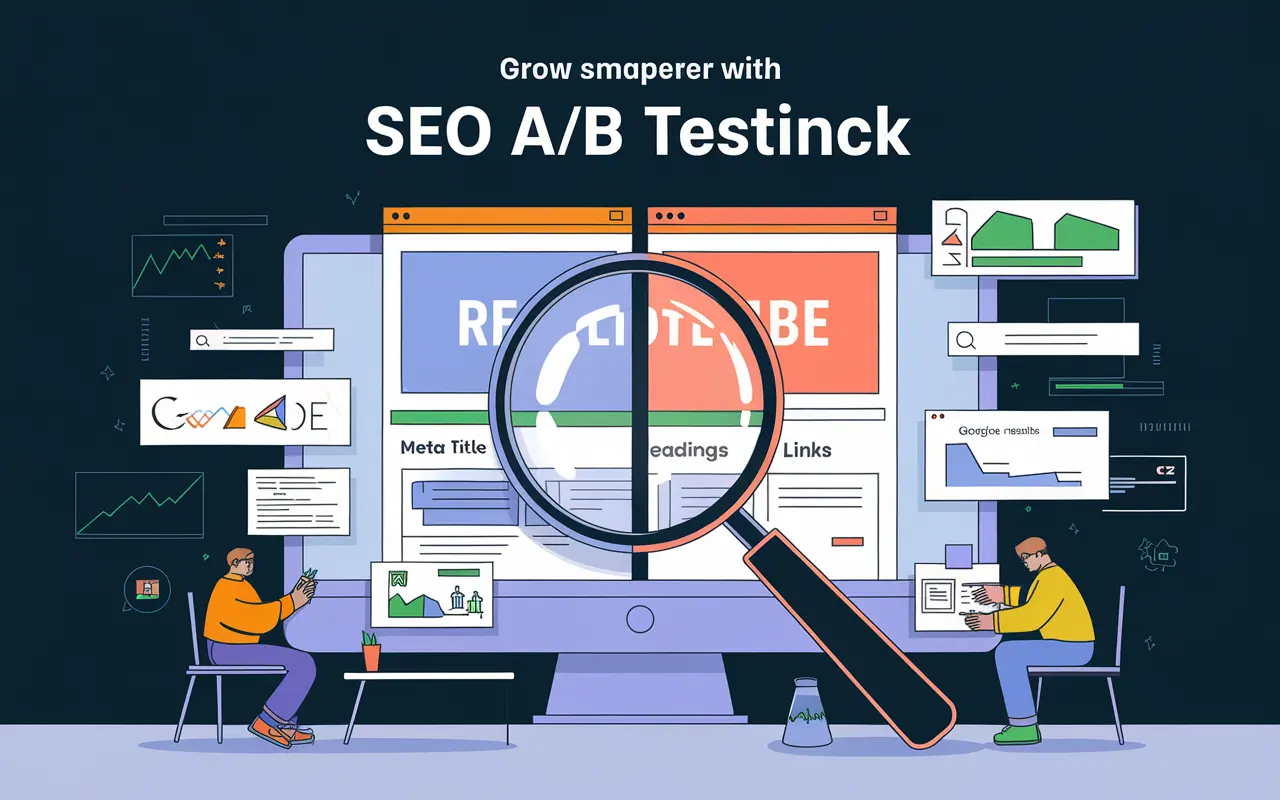Understanding SEO A/B Testing: Definition and Purpose
SEO A/B Testing, also known as split testing for SEO, is a process of comparing two versions of a web page to determine which performs better in terms of search engine optimization. Unlike traditional A/B testing that focuses solely on user behavior, SEO A/B testing is designed to measure the impact of specific changes—like meta tags, internal links, or content—on search engine rankings and traffic. It ensures you optimize your site based on data, not assumptions.
By using SEO A/B Testing, businesses can scientifically identify what changes yield the best results before implementing site-wide modifications. This approach minimizes risk, saves resources, and drives ROI from SEO strategies.
Key Takeaway
SEO A/B Testing allows data-driven website optimization by testing SEO-specific variables and identifying changes that boost organic traffic and rankings.
Why SEO A/B Testing is Critical for Search Engine Optimization
SEO A/B Testing plays a vital role in a successful SEO strategy. It helps avoid guesswork and validates SEO hypotheses through real data.
To learn more foundational tactics of search engine optimization, visit our full SEO Services Guide.
Helps Identify High-Impact Changes
Not all webpage adjustments improve SEO. Through SEO split tests, businesses can isolate and measure traffic lifts from elements like title tag rewrites, schema additions, or image optimizations.
Improves ROI and Sustainability
Making widespread updates without proven results can waste effort and hurt site performance. SEO A/B Testing ensures that you only scale what works.
Best Practices for Effective SEO A/B Testing
- Test One Variable at a Time: Isolate individual elements like heading tags, title lengths, or internal anchor texts.
- Segment Pages Properly: Choose pages with similar themes, authority, and traffic levels for statistical consistency.
- Set Clear SEO Metrics: Define your KPIs such as click-through rate (CTR), organic traffic, bounce rate, or keyword positioning.
- Run Tests for Long Enough: Give Google time (typically 3–6 weeks) to reflect changes in indexed rankings.
- Use SEO-Focused Testing Tools: Platforms like Google Optimize (discontinued), SplitSignal, and SearchPilot are tailored for SEO use-cases.
- Avoid JavaScript Cloaking: Ensure your changes don’t conflict with search engine guidelines or accidentally implement cloaking.
How SEO A/B Testing Works Step-by-Step
Here’s a breakdown of how SEO A/B Testing is implemented technically and strategically:
Step 1: Hypothesis Creation
Start by identifying an SEO improvement idea. Example: “Reducing H1 tag length will increase keyword relevance and improve rankings.”
Step 2: Page Group Segmentation
Split similar pages into a control group (no change) and a variation group (with changes). This keeps conditions consistent across the board.
Step 3: Implement the Test
Apply the changes to the test group only. Both sets are indexed by Google, so testing server-side (not client-side) is crucial for accurate results.
Step 4: Measure Impact
Track changes in organic metrics: keyword rankings, impressions, CTR, and traffic. Compare against the control group to evaluate significance.
Visual Comparison of Common SEO A/B Test Scenarios
| Test Element | Variation Example | Potential Metric Affected |
|---|---|---|
| Meta Title | “Best SEO Tools [2024]” vs. “Top SEO Tools for Professionals” | Click-Through Rate |
| URL Structure | /blog/seo-tools vs. /tools-for-seo | Keyword Rankings |
| Internal Linking | Add context-rich internal anchor text | Page Authority Flow |
| Content Headers | Using H2 instead of H3 for main points | Readability + Crawl Hierarchy |
Case Study: How SEO A/B Testing Improved Rankings for a SaaS Platform
Problem: Low Organic Click-Through Rates on Blog Pages
A SaaS company noticed that despite ranking on Page 1 of Google, their blog articles had disappointing CTRs. They suspected the meta descriptions weren’t effectively optimized.
Solution: Running a SEO A/B Test on Meta Descriptions
They segmented 100 similar blog posts. Group A (control) retained the existing meta descriptions. Group B (variant) had revised descriptions including power words, emotional triggers, and clearer benefit-driven phrases.
Results: Improved CTR and Conversions
Group B pages saw an average 24% CTR improvement and a 15% increase in organic bookings within 6 weeks. SEO A/B Testing justified rolling the new format across the entire blog archive.
Common Mistakes to Avoid in SEO A/B Testing
- Testing Client-Side (JavaScript Only): Google may not index the variation correctly, making results unreliable.
- Not Waiting Long Enough: Ending the test too soon can lead to false assumptions due to normal SERP fluctuations.
- No Control Group: Without a baseline, there’s no frame of reference to measure the variation’s success.
- Making Too Many Changes At Once: Testing multiple variables simultaneously clouds which element caused the result.
Related Terms to Explore
- SEO Audit: An overall evaluation of a website’s SEO health, often informing A/B test opportunities.
- On-Page SEO: Optimization of webpage elements targeted in most SEO split tests.
- Click-Through Rate (CTR): Often used as a KPI in evaluating SEO test success.
FAQs About SEO A/B Testing
Traditional A/B testing measures user behavior (like conversions), while SEO A/B testing experiments with elements that affect organic search rankings and indexed performance.
If done incorrectly—like cloaking content or using poor variation pages—it can violate Google’s Webmaster Guidelines. Always follow white-hat SEO principles.
An SEO A/B test should run for at least 3 to 6 weeks to account for indexing delays and algorithm recalculations.
Yes, but testing opportunities may be limited by site size. Split testing works best when you have groups of similar pages with decent traffic.
Conclusion: Unlock SEO Growth with Data-Driven A/B Testing
SEO A/B Testing empowers businesses to make informed decisions that enhance rankings and traffic. Instead of relying on guesswork, this structured and measurable approach boosts confidence in your SEO initiatives. Whether you’re optimizing meta elements, internal linking, or page layout, A/B testing ensures every change is backed by performance data.
Explore more advanced SEO strategies and solutions by visiting our dedicated SEO Services page.






